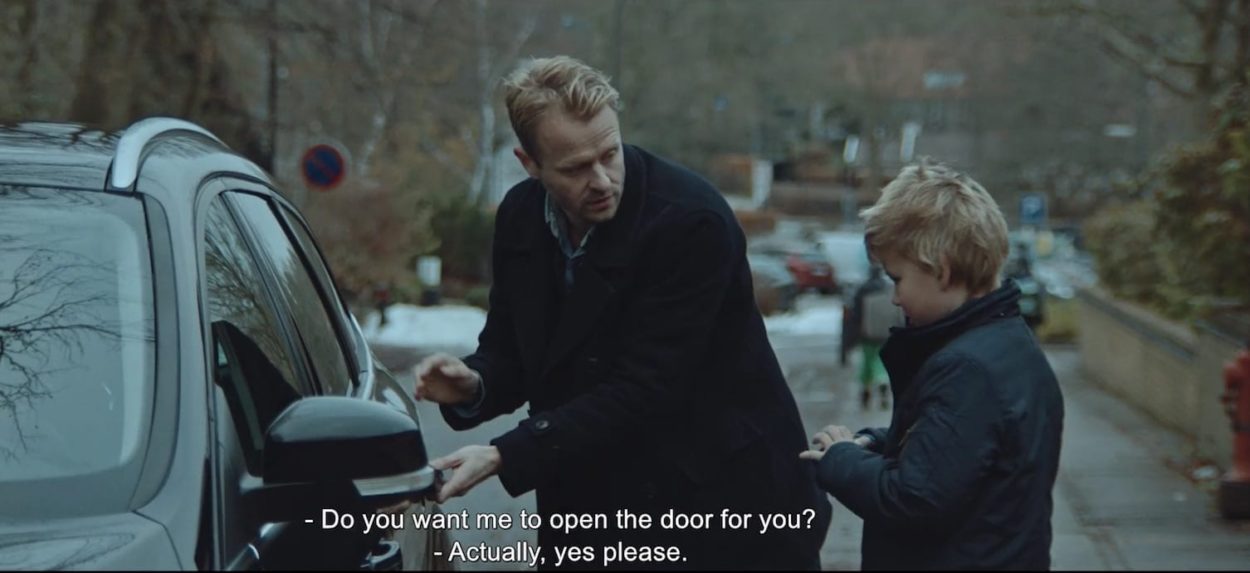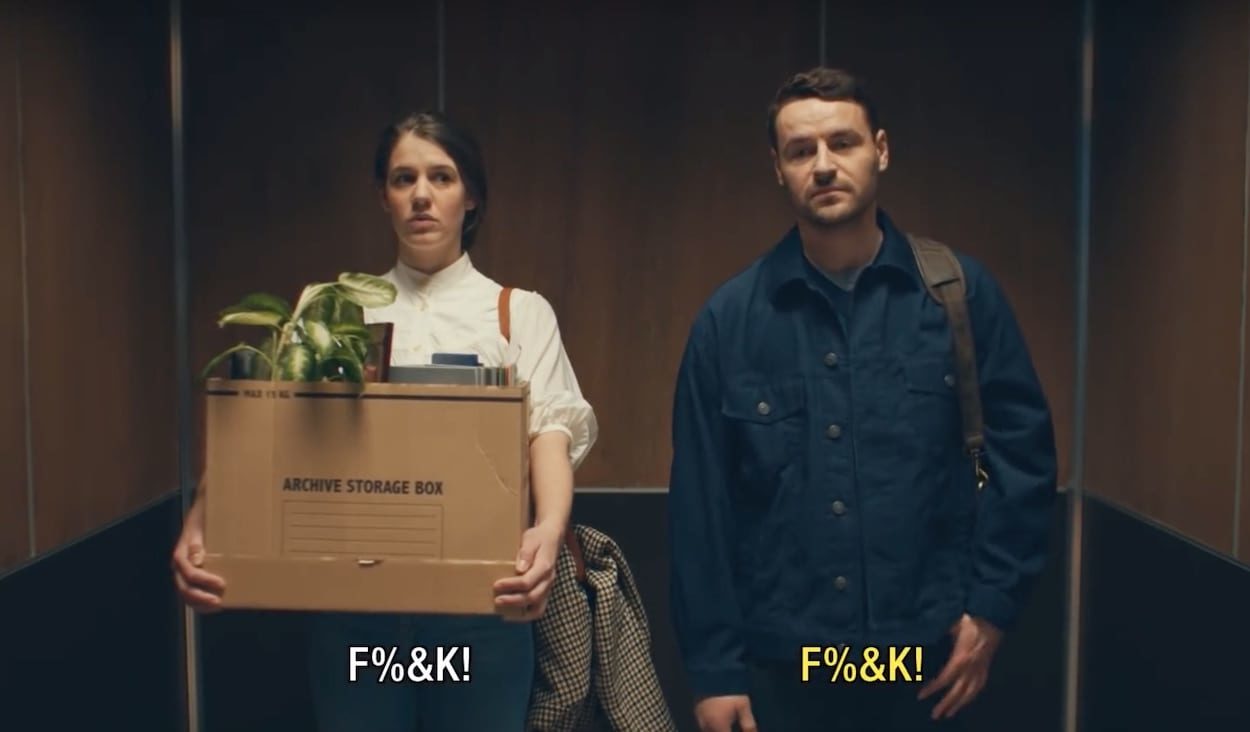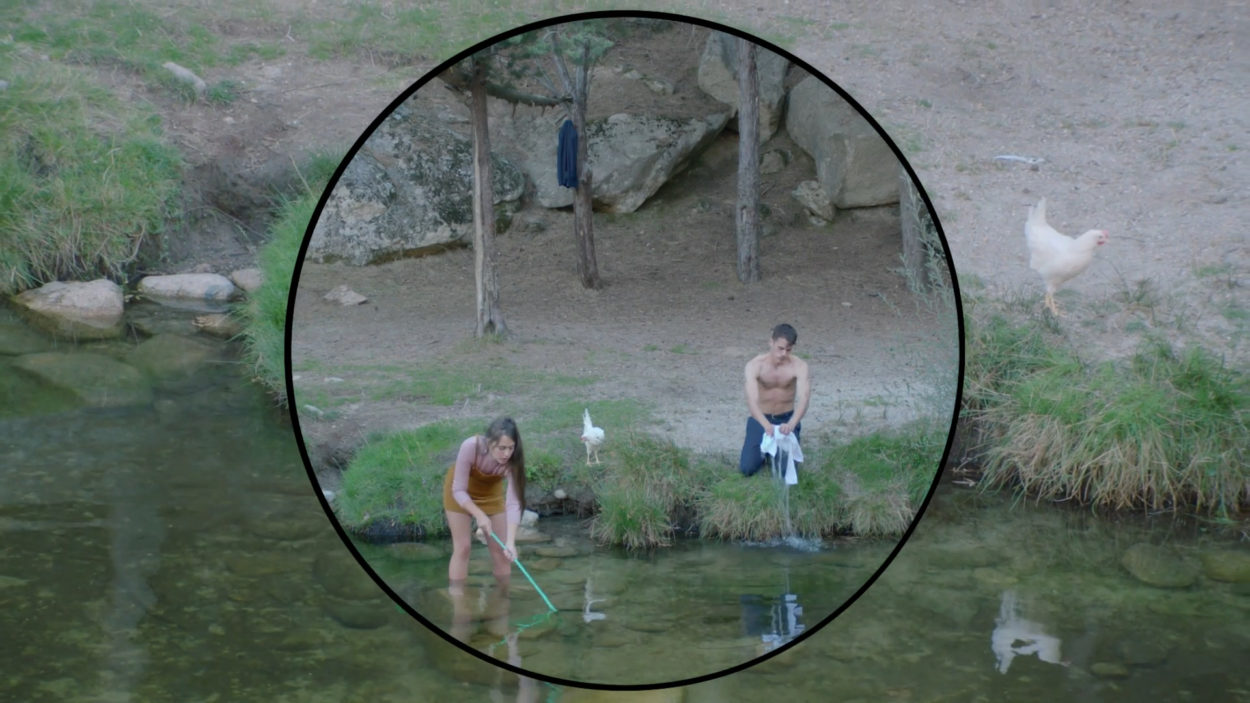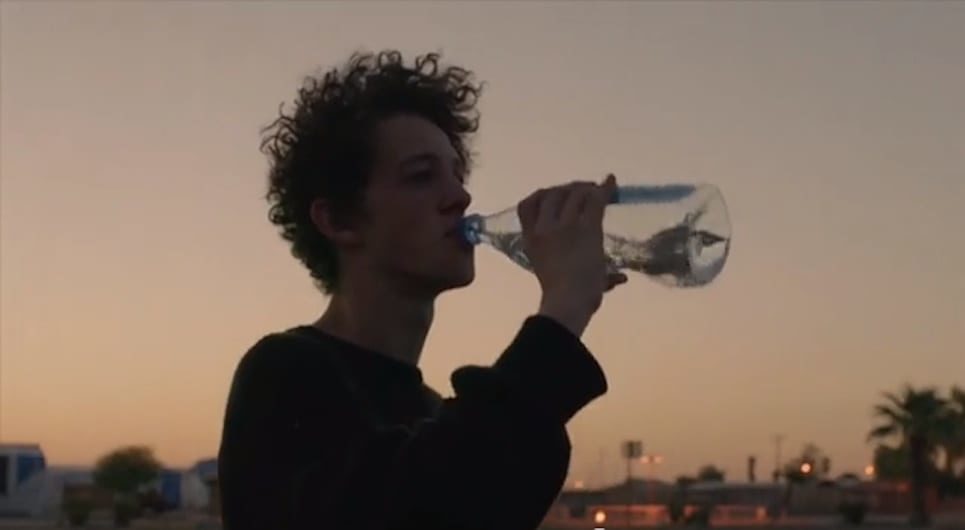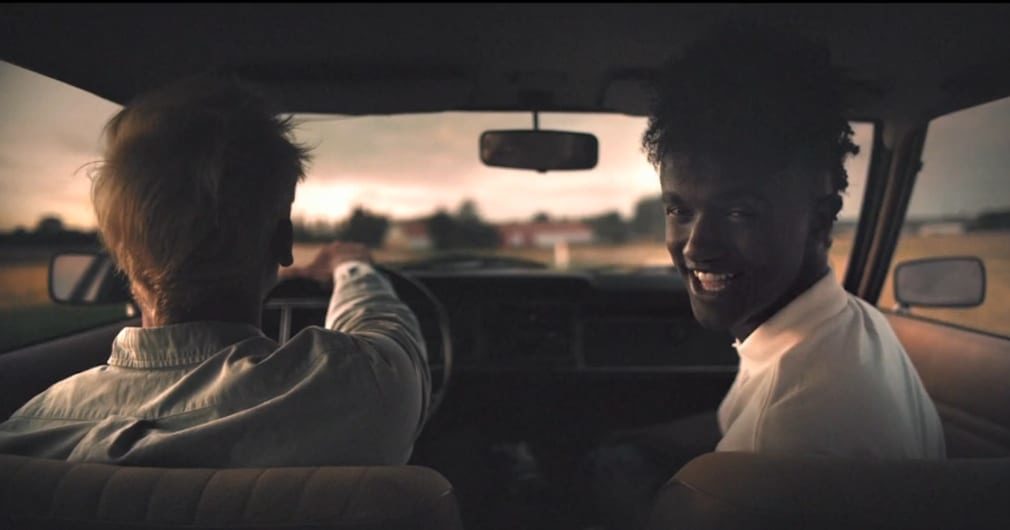How did the original brief come about?
It was from a Danish agency called Very, which is more of a social media agency that outsources most of its creative work. They do a lot of events and happenings and last year they did three 90-second documentary projects for Ford where the car was used to transport these two guys, who’d set up their own brand, out to surf, as well as a photographer and a chef, one of the guys who started Noma. The theme back then was supporting people against the odds.
So New Land were called in to pitch on a follow up three films for a new season of these films.
The agency had an idea that they wanted to do what they called Sadvertising. There wasn’t a big creative platform to build from, but what they had was a handicapped angle, as Ford is a very commonly used car for transporting disabled people. And they also of course had the “Supporting XX against the odds”.
So it was more or less a free pitch and “go ahead and show us what you can do”.
Is this when you started writing with Ingeborg Topsøe?
It was a liberating feeling collaborating with Ingeborg…I’d been searching for a screenwriter since I was about 19 and I’ve been so jealous of this Norwegian guy, Joachim Trier, he shoots commercials with Bacon and he’s done a couple of features, Louder Than Bombs which came out at Cannes this summer, and a film Oslo 31st of August. He writes with his childhood friend while I’ve just been so alone with it.
I met Ingeborg in Copenhagen at the CPH:PIX festival in Copenhagen in 2015.
We’re both Danish but I’d studied in LA and she’d been to the NFTS in London. So we both felt a bit like outsiders back home I guess. And we’d both almost just returned home.
This was Ingeborg’s and my first time working together.
What was the process of co-writing with Ingeborg? Do you work simultaneously on a script, or does one of you write the dialogue while the other focusses on the visuals?
We simply started a brainstorm – trying to come up with an idea for these new films.
We were trying to solve the pitch together.
We got really lost in all kinds of ideas, like Ingeborg’s husband’s best friend who has to drive around for his job but he doesn’t have a license so it’s his grandfather who drives him around.
Maybe we could base a film for Ford around that we thought.
Then suddenly I just came up with this scene of a small boy not wanting to come out of the car until his parents said they wouldn’t divorce. That became the basis of the film. And the idea of “Supporting families against the odds”.
After we came up with the overall idea with the divorce the storyline started to take form pretty quickly.
I think it took us three brain storm sessions, and then Ingeborg took the story and went and wrote the script. It is all her dialogue.
After this Jasper Spanning, my DoP, and I started talking about how to execute the film. Things changed a bit. For instance the opening scene was actually a football match, but there was snow on the ground on the day so last minute we decided to change it.
Was the agency ok about the shift in theme?
The agency came back and said they really liked it but missed the handicapped angle. At this stage there were two directors left in the running. We re-wrote part of the storyline where a grandparent was involved in the story and was handicapped, but my recommendation was let’s not have it in there because that’s not what the story is, it’s really about the insight of how prevalent a car is in a divorce.
From doing a ton of commercials I’m now learning that what you’re paid to do is sometimes really stick to your vision. They agreed and from then on it was 100 percent creative freedom.
The editing is key too to this piece – did you prep everything in detail prior to the shoot or did the story also evolve in the edit?
Now the editing process gave us a lot of gifts. Sofie Marie Kristensen, my editor, and I hadn’t worked together before and we were on a very tight schedule. So it was all about finding the scenes quickly without having much time to experiment. Basically a very bad thing to be doing when you don’t know each other well. But luckily I believe we had a great collaboration and Sofie came up with some great solutions.
Some things were planned ahead. The opening of each section of the film was set in stone. We had the long zoom in the two first episodes and the one-take at the opening of the first. We did some coverage to cut away from the one-take, but luckily we didn’t need to use it.
Peder Pedersen has appeared in another good video of yours – The Fall for Rhye, or am I mistaken? Is it an easy collaborative understanding that you have between you?
Peder is actually a composer, comedian and occasional rapper here in Denmark. He does also act, but I believe this is his most serious part so far.
He is not the actor from The Fall. This is Carsten Bjørnlund, who you might have seen in the series The Legacy.
Peder normally composes music for my commercials together with Asger Baden, so we knew each other okay well. I wanted to use him for this film because I believed his humour would be very good together with this serious subject.
And Peder is also a person with a great sensibility, who really understood the story and the dynamic we were trying to show. At least I feel that way.
The acting is restrained and honest, more so because they think rather than act the parts. How did you go about casting and directing the children?
First of all I was really lucky that we had these great choices. I guess I try to micro manage a bit when I feel there is something that isn’t working with kids. If you do a lot of takes I think it helps, because it’s almost like a repetition exercise – you forget yourself a bit. But overall I just look at the monitor and make sure I have a believable delivery of a line. It is like with any actor.
What were the main challenges of the production and how did you resolve them?
The main challenge was making a piece of branded content of the basis of a short film that was this long. We had very little money to pay everyone.
I didn’t resolve it – everyone around me worked their asses off. Our production manager pulled it all together, and my assistant was basically working as the location scout and AD. Of course we lost a location last minute and had to change around, of course there were misses here and there. It was basically a fifteen man crew who worked as if we were thirty-five people.
Anything else you’d like to share?
I just want to throw it out there that I want everyone to start making the film they want to make, and get help from a brand to create it.
I hope that agencies will be as supportive as Very was with this, and I hope young directors have production companies like New Land who support them so they can create their own film within an ad.
This of course also takes brave clients, like Ford was in this one.
Where’s your favourite place to think and create?
No where in particular. I’ve taught myself how to come up with ideas at any time, because I’ve written a lot of commercial treatments. It has helped me not to be as scared of the creative process.
But when creating ideas is really fun, I think it is about forgetting you have to create something, and then suddenly ideas start to come alive. It’s like the difference between reading a book at school and reading a book when you want to.
List five inspirations that have connected with you recently:
A hard one –
I just watched Me, Earl and the Dying Girl and I loved the style of the storytelling and the writing. I of course cried at the end. It is like a modern My life as a Dog.
I’m doing a month trip through Cambodia right now which is inspiring me. Stepping a bit away from daily life, and giving your head room for new ideas seems to be helpful.
Almost every day I listen to a podcast called Fresh Air.
A while back I heard an interview with the actor Louis Anderson. He’s a comedian normally known as being middle of the road, happy America funny. Now he is acting in Zach Galifinakis’ new FX show. And doing something very different. Listening to him was a very interesting experience.
LINKS:
